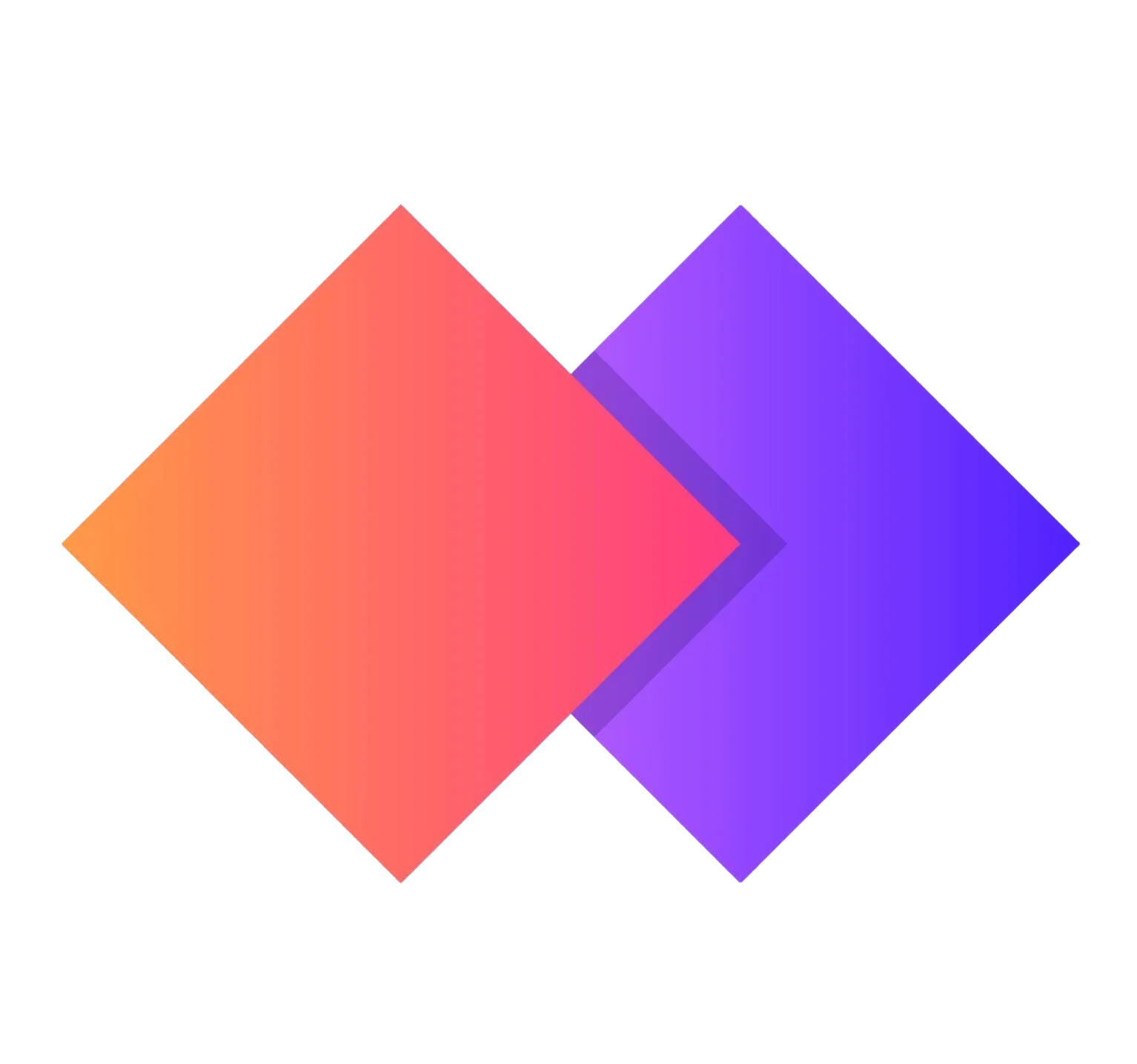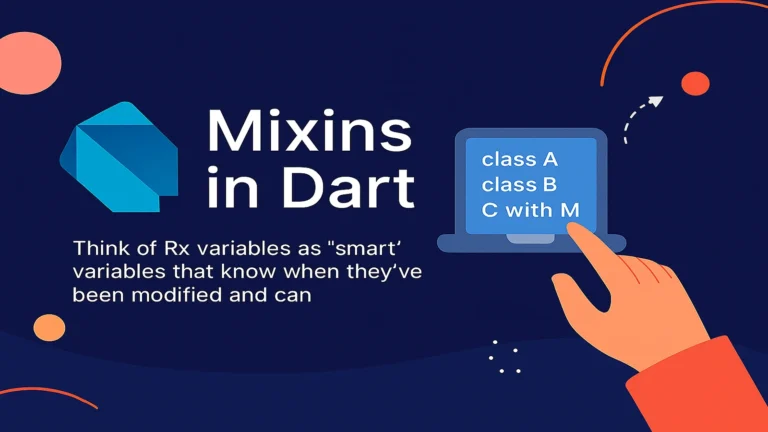Building stunning user interfaces in Flutter requires a solid understanding of Flutter Layouts (Column, Row, Stack, Container). These fundamental building blocks are essential for creating responsive, organized, and visually appealing mobile applications. Whether you’re just starting your Flutter journey or looking to refine your layout skills, mastering these core widgets will dramatically improve your development workflow.
In this comprehensive guide, we’ll explore Flutter Layouts (Column, Row, Stack, Container) in depth, providing practical examples, best practices, and tips to help you create professional-grade applications.
Understanding Flutter’s Layout System
Before diving into specific widgets, it’s important to understand how Flutter’s layout system works. Flutter uses a constraint-based layout system where parent widgets pass constraints down to their children, and children pass their sizes back up to their parents. This fundamental concept underlies all Flutter Layouts (Column, Row, Stack, Container) and determines how widgets are positioned and sized on screen.
The Container Widget: Your Swiss Army Knife
The Container widget is one of the most versatile widgets in Flutter Layouts (Column, Row, Stack, Container). It’s a convenience widget that combines common painting, positioning, and sizing widgets into one powerful package.
Key Features of Container
- Padding and Margin: Add spacing inside and outside the widget
- Decoration: Apply colors, gradients, borders, shadows, and more
- Constraints: Set minimum and maximum width and height
- Transformation: Apply rotation, scaling, and translation
- Alignment: Position child widgets precisely
Basic Container Example
Container(
width: 200,
height: 200,
padding: EdgeInsets.all(16),
margin: EdgeInsets.all(8),
decoration: BoxDecoration(
color: Colors.blue,
borderRadius: BorderRadius.circular(12),
boxShadow: [
BoxShadow(
color: Colors.black26,
blurRadius: 8,
offset: Offset(0, 4),
),
],
),
child: Text(
'Styled Container',
style: TextStyle(color: Colors.white, fontSize: 18),
),
)
Advanced Container Techniques
Containers become even more powerful when you combine their properties creatively:
Container(
decoration: BoxDecoration(
gradient: LinearGradient(
colors: [Colors.purple, Colors.blue],
begin: Alignment.topLeft,
end: Alignment.bottomRight,
),
borderRadius: BorderRadius.circular(20),
border: Border.all(color: Colors.white, width: 2),
),
child: Center(
child: Text('Gradient Container'),
),
)
The Column Widget: Vertical Layouts Made Easy
The Column widget is essential in Flutter Layouts (Column, Row, Stack, Container) for arranging children vertically. It’s perfect for creating forms, lists, and any interface that requires vertical stacking of elements.
Column Properties
- mainAxisAlignment: Controls vertical spacing (start, end, center, spaceBetween, spaceAround, spaceEvenly)
- crossAxisAlignment: Controls horizontal alignment (start, end, center, stretch)
- mainAxisSize: Determines if the Column should be as tall as possible (max) or only as tall as its children (min)
Practical Column Example
Column(
mainAxisAlignment: MainAxisAlignment.center,
crossAxisAlignment: CrossAxisAlignment.start,
children: [
Text('Welcome to Flutter', style: TextStyle(fontSize: 24)),
SizedBox(height: 16),
Text('Build beautiful apps', style: TextStyle(fontSize: 16)),
SizedBox(height: 16),
ElevatedButton(
onPressed: () {},
child: Text('Get Started'),
),
],
)
Column Best Practices
When working with Flutter Layouts (Column, Row, Stack, Container), avoid these common Column mistakes:
- Unbounded Height: Columns inside scrollable widgets need explicit heights
- Overflow Issues: Use
ExpandedorFlexiblewidgets to prevent overflow - Performance: Avoid deeply nested Columns; consider
ListViewfor long lists
// Good practice with Expanded
Column(
children: [
Container(height: 100, color: Colors.red),
Expanded(
child: Container(color: Colors.blue),
),
Container(height: 100, color: Colors.green),
],
)
The Row Widget: Horizontal Layouts Simplified
The Row widget works horizontally and is another critical component of Flutter Layouts (Column, Row, Stack, Container). It arranges children in a horizontal array, perfect for navigation bars, action buttons, and inline elements.
Row Properties
Row shares similar properties with Column but operates on the horizontal axis:
- mainAxisAlignment: Controls horizontal spacing
- crossAxisAlignment: Controls vertical alignment
- mainAxisSize: Determines horizontal sizing behavior
Creating Responsive Rows
Row(
mainAxisAlignment: MainAxisAlignment.spaceBetween,
children: [
Icon(Icons.home, size: 32),
Icon(Icons.search, size: 32),
Icon(Icons.favorite, size: 32),
Icon(Icons.person, size: 32),
],
)
Combining Row with Flexible Widgets
Row(
children: [
Flexible(
flex: 2,
child: Container(color: Colors.red, height: 100),
),
Flexible(
flex: 1,
child: Container(color: Colors.blue, height: 100),
),
Flexible(
flex: 1,
child: Container(color: Colors.green, height: 100),
),
],
)
The Stack Widget: Layering Elements
The Stack widget enables you to overlay widgets, making it invaluable in Flutter Layouts (Column, Row, Stack, Container) for creating complex UIs with overlapping elements.
Stack Fundamentals
- alignment: Default alignment for non-positioned children
- fit: How non-positioned children should be sized (loose, expand, passthrough)
- clipBehavior: Whether to clip children that overflow the stack
Basic Stack Implementation
Stack(
alignment: Alignment.center,
children: [
Container(
width: 300,
height: 300,
color: Colors.blue,
),
Container(
width: 200,
height: 200,
color: Colors.green,
),
Container(
width: 100,
height: 100,
color: Colors.red,
),
],
)
Positioned Widget in Stack
The Positioned widget gives you precise control over child placement within a Stack:
Stack(
children: [
Container(width: 300, height: 300, color: Colors.grey),
Positioned(
top: 20,
left: 20,
child: Container(width: 100, height: 100, color: Colors.red),
),
Positioned(
bottom: 20,
right: 20,
child: Container(width: 100, height: 100, color: Colors.blue),
),
Positioned.fill(
child: Center(
child: Text('Centered Text', style: TextStyle(fontSize: 24)),
),
),
],
)
Combining Flutter Layouts for Complex UIs
The real power of Flutter Layouts (Column, Row, Stack, Container) emerges when you combine them creatively. Here’s a practical example of a profile card that uses all four layout widgets:
Container(
margin: EdgeInsets.all(16),
decoration: BoxDecoration(
color: Colors.white,
borderRadius: BorderRadius.circular(16),
boxShadow: [
BoxShadow(
color: Colors.black12,
blurRadius: 10,
offset: Offset(0, 5),
),
],
),
child: Stack(
children: [
Column(
children: [
Container(
height: 150,
decoration: BoxDecoration(
gradient: LinearGradient(
colors: [Colors.purple, Colors.blue],
),
borderRadius: BorderRadius.vertical(top: Radius.circular(16)),
),
),
SizedBox(height: 60),
Text(
'John Doe',
style: TextStyle(fontSize: 24, fontWeight: FontWeight.bold),
),
SizedBox(height: 8),
Text(
'Flutter Developer',
style: TextStyle(color: Colors.grey),
),
SizedBox(height: 16),
Row(
mainAxisAlignment: MainAxisAlignment.spaceEvenly,
children: [
_buildStatColumn('Posts', '125'),
_buildStatColumn('Followers', '1.2K'),
_buildStatColumn('Following', '340'),
],
),
SizedBox(height: 16),
],
),
Positioned(
top: 100,
left: 0,
right: 0,
child: Center(
child: Container(
width: 100,
height: 100,
decoration: BoxDecoration(
shape: BoxShape.circle,
border: Border.all(color: Colors.white, width: 4),
image: DecorationImage(
image: NetworkImage('https://via.placeholder.com/100'),
fit: BoxFit.cover,
),
),
),
),
),
],
),
)
Performance Optimization Tips
When working with Flutter Layouts (Column, Row, Stack, Container), keep these performance tips in mind:
1. Avoid Unnecessary Nesting
Deeply nested layouts can impact rendering performance. Flatten your widget tree when possible:
// Instead of this:
Container(
child: Container(
child: Container(
child: Text('Hello'),
),
),
)
// Do this:
Container(
child: Text('Hello'),
)
2. Use const Constructors
Marking widgets as const helps Flutter optimize rebuilds:
const Container(
padding: EdgeInsets.all(16),
child: const Text('Constant Widget'),
)
3. Leverage RepaintBoundary
For complex layouts that don’t change frequently, use RepaintBoundary to isolate repaints:
RepaintBoundary(
child: Container(
// Complex widget tree
),
)
Responsive Design with Flutter Layouts
Creating responsive UIs is crucial for modern apps. Here’s how to make Flutter Layouts (Column, Row, Stack, Container) responsive:
Using MediaQuery
Widget build(BuildContext context) {
final screenWidth = MediaQuery.of(context).size.width;
return Container(
width: screenWidth > 600 ? 600 : screenWidth * 0.9,
child: Column(
children: [
// Content
],
),
);
}
LayoutBuilder for Adaptive Layouts
LayoutBuilder(
builder: (context, constraints) {
if (constraints.maxWidth > 600) {
return Row(
children: [
Expanded(child: _buildSidebar()),
Expanded(flex: 2, child: _buildMainContent()),
],
);
} else {
return Column(
children: [
_buildMainContent(),
],
);
}
},
)
Common Pitfalls and Solutions
Understanding Flutter Layouts (Column, Row, Stack, Container) means knowing what can go wrong:
Overflow Errors
When children exceed available space:
// Solution 1: Use Expanded
Column(
children: [
Expanded(
child: ListView(
children: [...],
),
),
],
)
// Solution 2: Use SingleChildScrollView
SingleChildScrollView(
child: Column(
children: [...],
),
)
Unbounded Constraints
Some widgets need explicit dimensions:
// Wrong
Row(
children: [
TextField(), // Needs width constraint
],
)
// Right
Row(
children: [
Expanded(
child: TextField(),
),
],
)
Real-World Example: Building a Dashboard
Let’s create a comprehensive dashboard using all aspects of Flutter Layouts (Column, Row, Stack, Container):
class DashboardScreen extends StatelessWidget {
@override
Widget build(BuildContext context) {
return Scaffold(
appBar: AppBar(title: Text('Dashboard')),
body: SingleChildScrollView(
padding: EdgeInsets.all(16),
child: Column(
crossAxisAlignment: CrossAxisAlignment.start,
children: [
// Header with stats
Row(
children: [
Expanded(child: _buildStatCard('Sales', '\$12,345', Colors.blue)),
SizedBox(width: 16),
Expanded(child: _buildStatCard('Orders', '234', Colors.green)),
],
),
SizedBox(height: 16),
Row(
children: [
Expanded(child: _buildStatCard('Users', '1,234', Colors.orange)),
SizedBox(width: 16),
Expanded(child: _buildStatCard('Revenue', '\$45K', Colors.purple)),
],
),
SizedBox(height: 24),
// Chart section
Text(
'Analytics',
style: TextStyle(fontSize: 20, fontWeight: FontWeight.bold),
),
SizedBox(height: 16),
Container(
height: 200,
decoration: BoxDecoration(
color: Colors.white,
borderRadius: BorderRadius.circular(12),
boxShadow: [
BoxShadow(
color: Colors.black12,
blurRadius: 8,
offset: Offset(0, 4),
),
],
),
child: Center(child: Text('Chart Placeholder')),
),
// Recent activities
SizedBox(height: 24),
Text(
'Recent Activities',
style: TextStyle(fontSize: 20, fontWeight: FontWeight.bold),
),
SizedBox(height: 16),
...List.generate(5, (index) => _buildActivityItem(index)),
],
),
),
);
}
Widget _buildStatCard(String title, String value, Color color) {
return Container(
padding: EdgeInsets.all(16),
decoration: BoxDecoration(
color: color.withOpacity(0.1),
borderRadius: BorderRadius.circular(12),
border: Border.all(color: color.withOpacity(0.3)),
),
child: Column(
crossAxisAlignment: CrossAxisAlignment.start,
children: [
Text(title, style: TextStyle(color: Colors.grey[600])),
SizedBox(height: 8),
Text(
value,
style: TextStyle(
fontSize: 24,
fontWeight: FontWeight.bold,
color: color,
),
),
],
),
);
}
Widget _buildActivityItem(int index) {
return Container(
margin: EdgeInsets.only(bottom: 12),
padding: EdgeInsets.all(12),
decoration: BoxDecoration(
color: Colors.white,
borderRadius: BorderRadius.circular(8),
border: Border.all(color: Colors.grey[300]!),
),
child: Row(
children: [
Container(
width: 40,
height: 40,
decoration: BoxDecoration(
color: Colors.blue[100],
shape: BoxShape.circle,
),
child: Icon(Icons.notifications, color: Colors.blue),
),
SizedBox(width: 12),
Expanded(
child: Column(
crossAxisAlignment: CrossAxisAlignment.start,
children: [
Text(
'Activity ${index + 1}',
style: TextStyle(fontWeight: FontWeight.bold),
),
Text(
'Description of activity',
style: TextStyle(color: Colors.grey[600], fontSize: 12),
),
],
),
),
Text(
'${index + 1}h ago',
style: TextStyle(color: Colors.grey, fontSize: 12),
),
],
),
);
}
}
Conclusion
Mastering Flutter Layouts (Column, Row, Stack, Container) is essential for any Flutter developer. These fundamental widgets provide the foundation for building beautiful, responsive, and performant user interfaces. By understanding how each widget works, when to use them, and how to combine them effectively, you’ll be able to create professional-grade applications that delight users.
Remember to:
- Use Container for styling and spacing individual elements
- Implement Column for vertical arrangements
- Apply Row for horizontal layouts
- Leverage Stack for overlapping elements
- Combine all four for complex, real-world UIs
Keep practicing with these widgets, experiment with different combinations, and always consider performance and responsiveness in your designs. The more you work with Flutter Layouts (Column, Row, Stack, Container), the more intuitive and powerful they become.
Happy Flutter coding!
Looking to deepen your Flutter knowledge? Check out the more Flutter documentation and join the vibrant Flutter community for more tips, tricks, and best practices.






